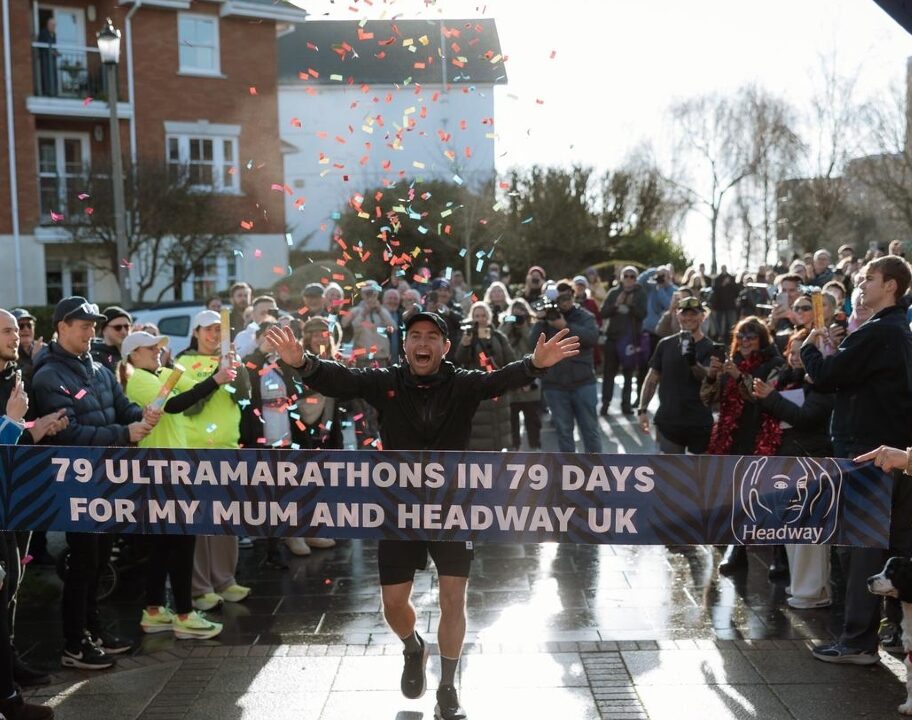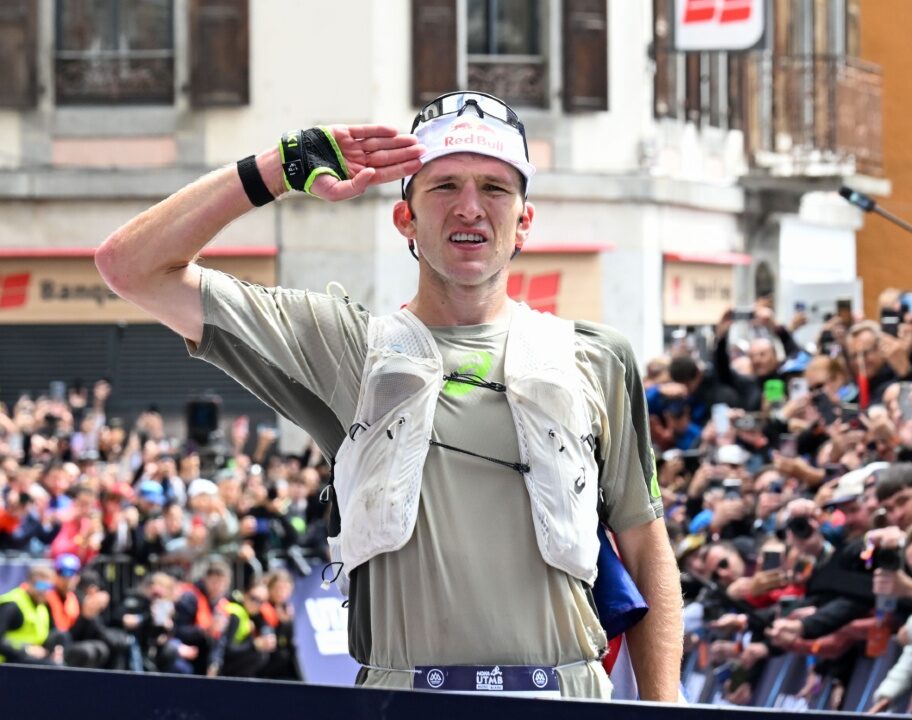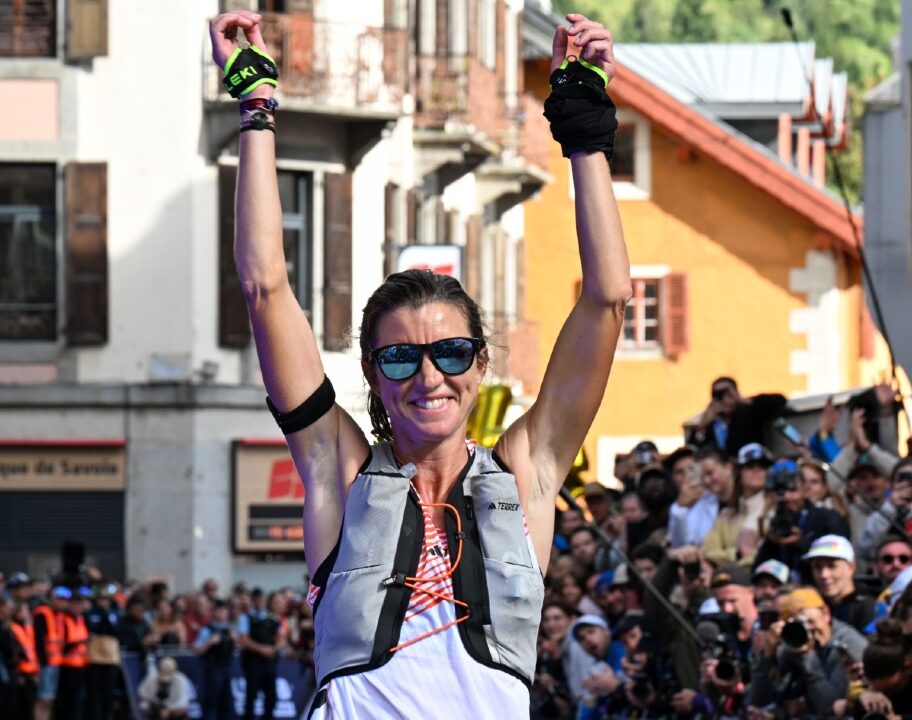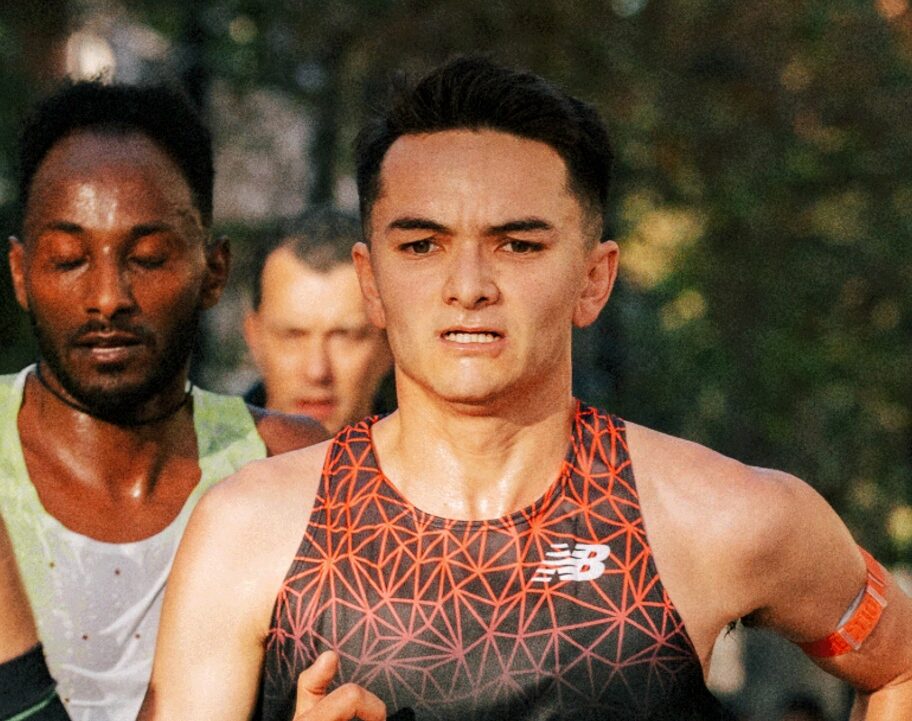For many, a spot of ‘selfish me time’ might involve a few quiet hours reading a book or an evening on the sofa binge-watching a guilty pleasure on TV. But for Spine ultra runner Kendra Wedgwood, ‘selfish me time’ involves hours spent battling the elements, running the big miles and testing her limits.
As the “accidental” (her words) winner of Spine Challenger South 2022 gets set to take on the full Montane Winter Spine race, we caught up with Kendra to find out what it takes to prepare for one of the hardest ultra marathons out there – and what it is about ultra running that keeps her coming back for more.
‘I want to see how far I can push my body…’
A little under four years ago, Kendra Wedgwood set herself a challenge to mark a milestone birthday that would open up the world of ultra endurance running. “I entered into the Hardmoors Super Slam for my 40th birthday. It’s a series of five races: 30, 55, 60, 80 and 110 miles. Prior to that, I’d only ever raced up to 10km with the police cross country team. But I wanted to mark my birthday with something big.”

“I ended up doing really well. In fact, I was first female overall which was a shock as I had no idea what I was doing. But I knew I preferred the longer stuff straight away, so I guess Hardmoors is where it all started.”
“Running ultra long distances is my selfish time. It’s the only time where I just have to look after myself and be truly in the moment. I want to see how far I can push my body and what the limit is.”
An accidental win
When it comes to testing limits, there are few events quite as brutal as the Montane Winter Spine race. 268 miles, across incredibly challenging terrain in the north of England’s famously bitter winter conditions. Kendra has already had a small taste of what’s to come, after taking the win in the women’s field at the Spine Challenger South in 2022 – a 108 mile race taking in the southerly half of the full Spine route.
“It was an accidental win, and I was as shocked as anyone when I found out I was first female at Malham Tarn! I was supposed to defer due to other races, but I missed the deadline so I just had to do it.”
“I didn’t have most of the kit, so I had to borrow kit from my husband. I did the second half of the race wearing trousers and a jacket three sizes too big for me. The Spine Challenger taught me so much about myself, and I realised then that I have a natural ability to endure pain and suffering for a long time – plus I can maintain good ‘admin’ in tough conditions.”

Despite that ‘accidental’ win, the prospect of completing the full Spine still felt a long way off. “I remember someone asking if I would ever do the full Spine when I completed the Challenger and I laughed because it seemed so ludicrous. Yet here I am, two years later preparing for the start line!”
Taking on the ‘ludicrous’ challenge of the Winter Spine race
So what is it about the ‘ludicrous’ challenge of the Winter Spine that’s got Kendra coming back for more?
“I guess it’s such an iconic race, and I don’t know if I can finish. That’s why I want to do it.”
That’s a sentiment which is likely to ring true for most runners and ultra runners, no matter their distance of choice. Taking on a challenge which tests your limits and gives you the opportunity to discover what you’re capable of is arguably what keeps all of us hooked on endurance sport.
For Kendra, preparing for the Winter Spine has involved plenty of long days out and taking a no stone unturned approach to kit and nutrition with the help of her coach, Kim Cavill. “I’ve spent long days out, carry the pack and faffing with kit. My coach held a training weekend where I learned about the course, race-specific nutrition and hydration. Tips for packing my bag, tips for a good drop bag. Check point advice, sleep strategy… It was hugely beneficial to say the least.”
Sleep strategy
Practical preparation and physical training is one thing, but another big factor in races like the Spine is being able to cope with sleep deprivation and running through the night. That’s something Kendra has had plenty of experience with. “I now have a lot of experience with sleep deprivation in races. I know what the hallucinations can be like. Some fun, some not so fun.”
“When I did the Spine Challenger, I’d done a set of night shifts at work so by the time I got to the start line I was already on day four of no sleep! For the full Spine, I have a loose sleep strategy but I’ll play it by ear.”
‘If your head goes, you’ve had it.’
Physical fitness is just one part of being able to complete an ultra marathon as extreme as the Spine race. A huge part of it comes down to mental toughness. Both a willingness to push your limits, but also the ability to stay focused – and organised – amid fatigue, sleep deprivation and challenging weather conditions. “I think that’s always been inside me,” says Kendra. “In my early 20s, I joined the Territorial Army. I learned a lot about myself, including that I was naturally very good at admin in the mountains.”
“You can be the fittest person in the world but if your head goes, you’ve had it. If your admin is poor, you’ve had it. My head is my secret weapon I guess.”
“The biggest thing is knowing that pain doesn’t last. The overwhelming joy of finishing will far outweigh any misery you experience during the event.”
Read our Winter Spine race guide to learn more about one of the hardest ultra marathon challenges going.






